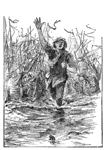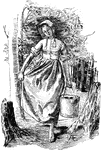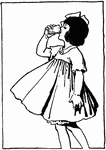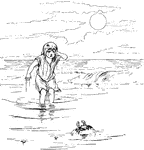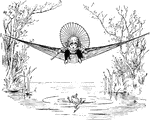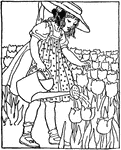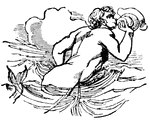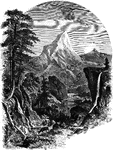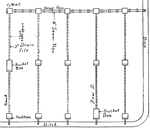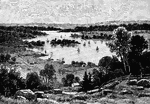
Funeral Procession Crossing the Lake of the Dead
"As the mummy of the dead was placed in a barge to be taken across the Lake of the Dead-for it was the…
Furrow Method
"Showing Furrow Method of Irrigating Potatoes. The arrows indicate the direction taken by the capillary…

Galley (ship)
A Galley is a low, flat-built vessel furnished with one deck.It was primarily employed by the Romans,…
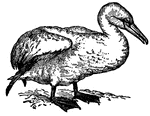
Gannet
Also known as a Solan Goose (Sula bassana), the Gannet is a large marine bird which nests in scattered…

Gothic Gargoyle
A gargoyle on the 13th century cathedral, La Sainte-Chapel in Paris, France, an example of Gothic architecture.

Apparatus Used to Seperate Volatile Gases
"If it be required to separate the helium which is often found in the gases given off by a thermal spring,…

Rain Gauge
An instrument used to measure the quantity of a rain which falls at a given place. They are which falls…

Geirrod's Daughter Pouring Water
Geirrod the giant's daughter pours a pitcher of water into a stream. Thor and Loki are wading through…
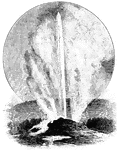
Geyser in Eruption
Geysers are boiling springs which, at intervals more or less regular, shoot out huge columns of water…

Gills (Branchial Arch of Perch)
This illustration shows the gills (breathing apparatus) of a perch, as well as the specific veins and…

Gills (Crayfish)
This illustration shows the thorax of a crayfish with a portion of the carapace removed to show the…

Gills (worm)
This illustration shows a transverse section of a worm with external gills. Gills are the breathing…
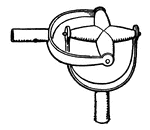
Gimbals (Joint)
A gimbals is a contrivance designed to keep a marine compass, chronometer, lamp, or other instrument…

Girl Heating Water in Tea Kettle
An illustration of a girl heating water in the stove in a tea kettle.
Gravel Hill
"Suppose a to be a gravel hill, and b a strata of clay or rock, impervious to water. The fluid percolating…
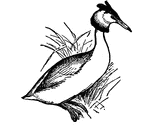
Great Crested Grebe
The Great Crested Grebe (Lophæthyia cristata) is a fresh-water, migratory, diving bird of the family…
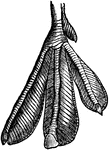
Foot of Grebe
"In this foot each toe is provided with its swimming membrane; the membrane being closed when the foot…
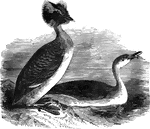
Sclavonian Grebe
Also known as the horned grebe, dipper, water-witch, and hell-diver, the sclavonian grebe is common…

Group Playing in Water
An illustration of a group consisting of three females and one male playing in water.

Jesus Heals a Paralytic Man at the Pool at Bethesda While an Angel Troubles the Waters
"for an angel of the Lord went down at certain seasons into the pool, and troubled the water: whosoever…

Hero's Machine
"Hero's Machine. The generation of steam from water by the application of heat, and the mechanical force…
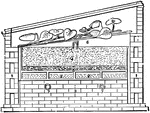
Pipe-heated hotbed
"Hotbeds may be heated by means of either steam or hot water. They can be piped from the heater in a…

Hydraulic Bellows
"An instrument called the hydrostatic bellows, also shows, in a striking manner, the great force of…

Hydraulic Water Ram
"The hydraulic ram uses alternating water pressure, air pressure, and suction to provide a steady stream…

Hydraulic Ram
"Pumps water in bursts. Water enters pipe B and is forced into D then up the tube F. Any excess water…
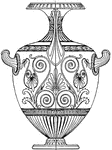
Greek Hydria
The Greek Hydria is used as a water-pot to carry water with from springs. Maidens carried it on their…

Greek Hydria
This Greek Hydria has a Kalpis form that is smooth and painted in black and red figures on the shoulder.…

Greek Hydria
This Greek Hydria is painted in black, reddish brown and white. Decorated of the highest class, the…

Intermitting Spring
"A mountain and spring, showing how the principle of the syphon operates to produce the effect described.…
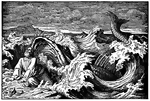
Jonah is Swallowed by a Great Fish Sent by God
"And Jehovah prepared a great fish to swallow up Jonah; and Jonah was in the belly of the fish three…

Juncus Acutiflorus
Juncus acutiflorus belongs to a genus of grass-like herbs (Juncus) that grow in boggy places.

Juncus Compressus
Juncus compressus belongs to a genus of grass-like herbs (Juncus) that grow in boggy places.
Juncus Conglomeratus
Juncus conglomeratus, also known as the common rush, belongs to a genus of grass-like herbs (Juncus)…

Juncus Effusus
Known as the soft rush, Juncus effusus is nearly as common as the most common species, J. conglomeratus.…

Juncus Glaucus
Juncus glaucus belongs to a genus of grass-like herbs (Juncus) that grow in boggy places.
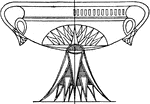
Egyptian Krater
The Egyptian Krater is an antique vase that has a lotus cup design. Typically used for mixing water…

Egyptian Krater from Thebes
This Egyptian Krater is an antique vase that was found in Thebes, Ancient Egypt during the eighteenth…

Jesus Washes the Disciples' Feet to Show the Importance of Baptism and Penance
"So when he had washed their feet, and taken his garments, and sat down again, he said unto them, Know…
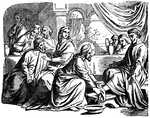
Jesus Washes the Feet of His Twelve Disciples after the Last Supper
"Then he poureth water into the basin, and began to wash the disciples' feet, and to wipe them with…
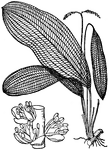
Lattice Leaf
Lattice Leaf is the popular name of a water plant, 'Aponogeton jenestralis', belonging to the order…

Lemming
A lemming is a small, yellowish-brown rodent, closely related to the vole, and belonging to the genus…

The Lentil Plant
This illustration shows a lentil plant. Lentils are the round, flat seeds of a small leguminous plant…
